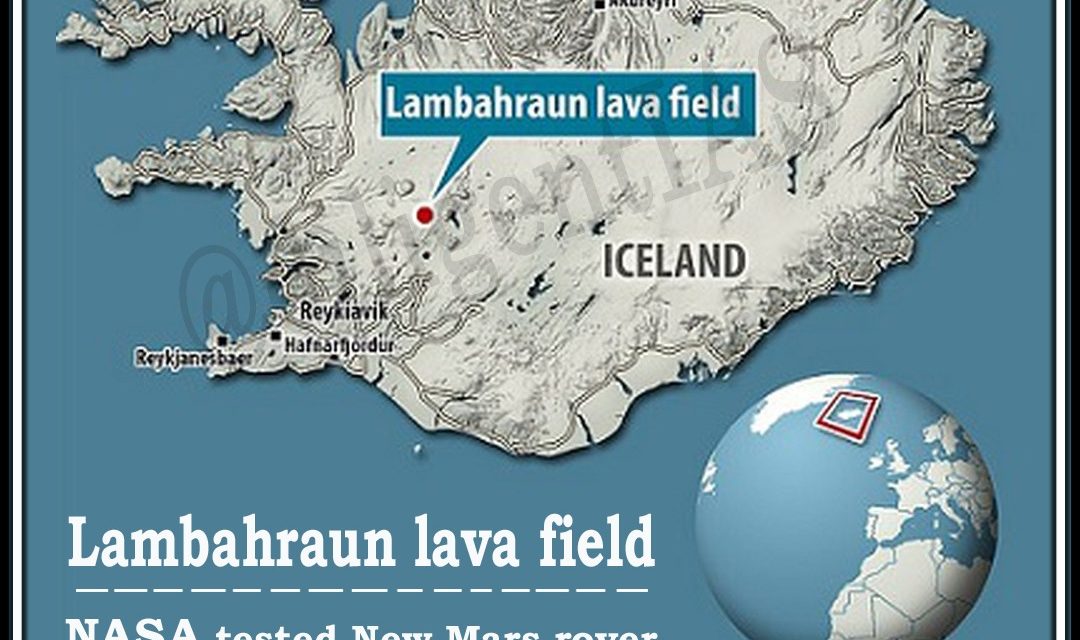NASA tested New Mars rover on Iceland’s lava field – Diligent IAS 20/08/2019 – Posted in: Daily News
NEW MARS ROVER TESTED ON ICELAND’S LAVA FIELD
For: Mains
Topics covered:
- Why NASA tested its rover on Iceland?
- Advantages and significances
- Prototype and data transmission
News Flash
NASA has taken to the lava fields of Iceland to get its new robotic space explorer ready for the next mission to Mars in 2020.
- The Lambahraun lava field, at the foot of Iceland, has black basalt sand, wind-swept dunes and craggy peaks, was chosen as a stand-in for the Red Planet’s surface.
- It is Iceland’s second biggest glacier.
- Iceland is a very good analogue for Mars exploration and learning how to drive Mars rovers.
- NASA to test a rover prototype as part of the SAND-E (Semi-Autonomous Navigation for Detrital Environments) project.
Prototype
- The prototype is a small, electric vehicle with white panels and an orange chassis.
- It has a four-wheel-drive propelled by two motors and is powered by 12 small car batteries stacked inside.
- This rover is basically indestructible.
- Equipped with sensors, a computer, a dual-lens camera and controlled remotely, the rover moves its approximately 570 kilograms at a leisurely speed of about 20 centimetres per second.
- The speed needs to be slow to enable the rover to collect data and imagery properly.
Data transmission
- The rover gathers and classifies data from its environment and sends back the findings to the engineers’ trailer.
- The engineers then package the data and forward it to a tent where the scientists are huddled, to simulate how the data would be sent from Mars to Earth.
- The rover exploring Iceland be able to collect samples and store them in tubes to be brought back to Earth by future missions.
Similar to Mars
- The sites are selected to study how the chemical composition and physical properties of the sand and rocks change as they move from the glacier to a nearby river.
- Before Mars became an inhospitable frozen desert with an average temperature of minus 63 degrees C, scientists believe that the planet shared many of the characteristics of the subarctic island.
- The mineralogy in Iceland is very similar to Mars. In particular, minerals such as olivine and pyroxenes, both dark so-called mafic rocks, which have also been found on Mars.
Why Iceland
- Iceland has much vegetation, cold and have some of the environments like sand dunes and rivers and glaciers that Mars has evidence of in the past.
- Iceland has previously been used as a training ground for NASA missions.
- During the Apollo mission years, 32 astronauts in the mid-1960s received geological training in the Askja lava fields and near the Krafla crater in the north of the country.
- The setting allows NASA to test equipment and procedures, as well as the people performing them, in extreme environments while remaining on terra firma.
Source: The Hindu
Also, read more daily News
- United Nations Special Purpose Trust Fund (SPFT)
- Haryana administrative tribunal
- Negative Interest Rate Policy
- Lead in polyvinyl chloride (PVC) pipes
- Corporate Social Responsibility
- RBI released the framework for Regulatory Sandbox
- Sagittarius A* (Sgr A*) a super-massive black hole
You are on the Best Online IAS preparation platform. You are learning under experts.
We are present on Facebook- Diligent IAS, LinkedIn- Diligent IAS, YouTube- Diligent IAS, Instagram- Diligent IAS. Get in touch with us.

